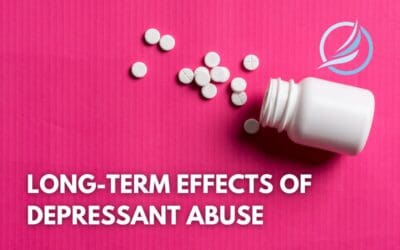What caused the barbiturates to go from the sedative of choice from the 1920s to the 1950s to a now mostly abandoned medicine? Despite what you might think, it wasn’t a lack of efficacy. Barbiturates are potent and effective. However, this hasn’t been enough to prevent them from being effectively replaced by benzodiazepines. Simply put, medical professionals don’t use barbiturates for anxiety, or much of anything else anymore because the many potential drawbacks fail to outweigh its usefulness. To understand this we will take a look into exactly how barbiturates work and what makes them so dangerous.
A Brief History of Barbiturates, the New Wonderdrug
The origins of barbiturate drugs can be traced as far back as the late 1800s. When its sedative properties were discovered in 1903 barbiturates revolutionized how psychiatric and neurological disorders were treated and the role that pharmaceuticals could play.
Barbiturates quickly became the drug of choice for therapists dealing with schizophrenics and insomnia and others long thought to be “untreatable”. The following decades brought further discoveries of its usefulness as an antiepileptic and anesthetic, resulting in more than 2,500 types of barbiturates being created for clinical use. Today, only a fraction of them are still in use.
How Barbiturates Work
Barbiturates are central nervous systems depressants that target gamma amino butyric acid, a neurotransmitter more commonly known as GABA. This important molecule is the primary inhibitor of the central nervous system. Translation: GABA reduces the activity of central nervous system nerve signals, preventing the brain from receiving messages as well as reacting to them.
As a GABA agonist, barbiturates can do this by binding to receptors and causing them to stay open for a longer period than normal. This, in turn, results in the negatively charged Chloride ions being able to fill the neuron receptor and prevent it from being activated. The lowered reactivity of these receptors is why barbiturates and other GABA-influencing pharmaceuticals (including benzos) induce calming and sedative effects.
However, reducing neural activity isn’t the only reason why barbiturates were so effective at countering anxiety and other conditions. Several diseases and psychiatric conditions have been found to have a direct correlation with GABA such as:
- General anxiety
- Schizophrenia
- Autism
- Major depressive disorder
- Epilepsy and seizures
By contrast, benzodiazepines perform a near-identical function without directly stimulating the GABA receptor. Instead,
The Dangers of Barbiturates
It would seem that barbiturates were well matched and deserving of their status as a pharmacological darling. However, barbiturates carry a high addiction potential. The two scientists who created barbiturates as we know them today, themselves suffered from a barbiturate dependence.
In its heyday around the 1950s, it was estimated that there were over a quarter of a million Americans with a barbiturate addiction and thousands of directly attributable drug overdose deaths. One of the most prolific celebrities of the time, Marilyn Monroe, is believed to have died due to a barbiturate overdose.
Many of these overdoses were accidental, as barbiturates are potent and have a very narrow dosage margin. Using slightly too much or for slightly too long a period could have disastrous effects such as coma or death. Even when legislation made barbiturates only available via prescription and for use in the short term, that was still not enough to curtail the rash of deaths.
Other side effects of barbiturates include:
- Confusion
- Drowsiness
- Hallucinations
- Headaches
- Hypotension (low blood pressure)
- Nausea
- Sedation
- Slowed or stopped breathing
- Skin rashes
Another major risk that comes with using barbiturates is the many potential drug reactions. It is known to be fatal if combined with a wide variety of substances including alcohol, antidepressants, antihistamines, steroids, opioids, many other OTC medications, birth control, and even other barbiturates or benzodiazepines.
Are Benzodiazepines Safe for Treating Anxiety?
Unfortunately, the medication that has virtually replaced all previous barbiturate uses has also taken on barbiturate’s potential to be addictive. Despite being supposedly weaker to its indirect mechanism of action, benzos are a common target for abuse. Valium, Xanax, and Klonopin are a few types of benzodiazepines and make up some of the most widely prescribed medications in the country.
In 2019, it’s estimated that 4.8 million Americans abused some form of benzodiazepine. The seeming progress of pharmacology is not failproof and even the medicines deemed to be “safer” don’t necessarily mean that they’re risk-free. Learn more about how to recognize the signs of a benzo addiction and the potential risks of medicines that are meant to treat anxiety.

































